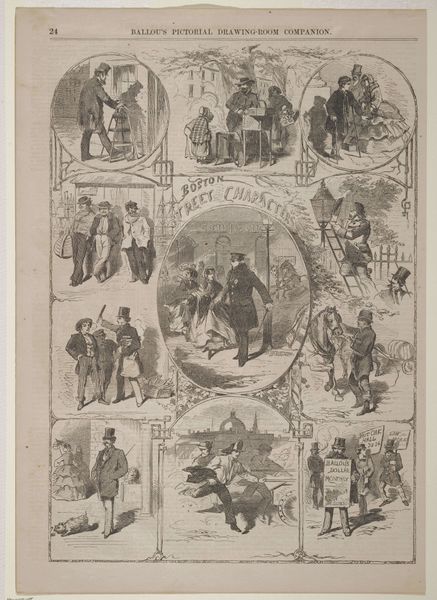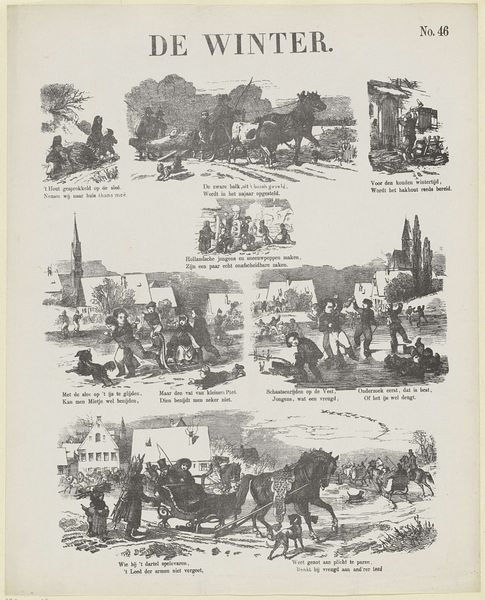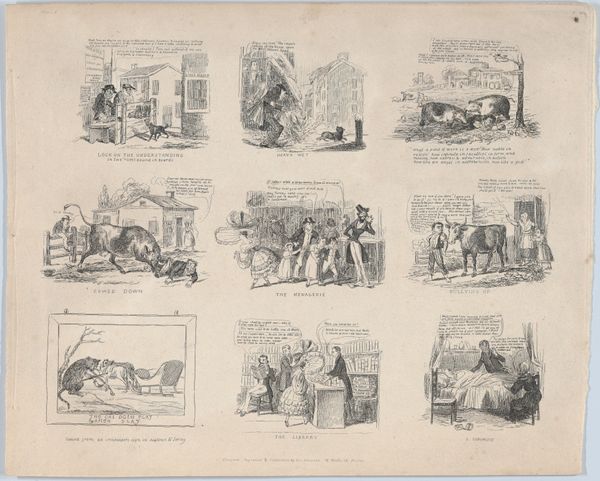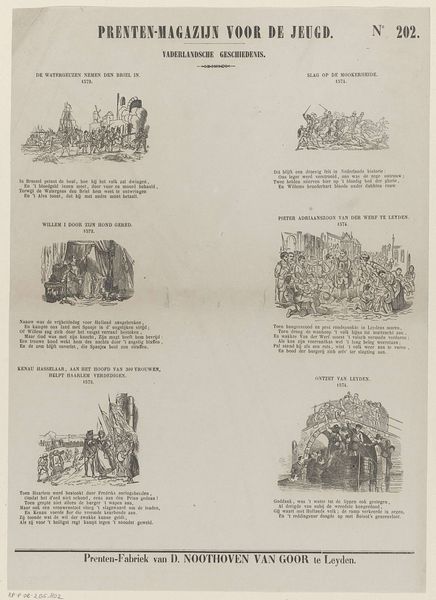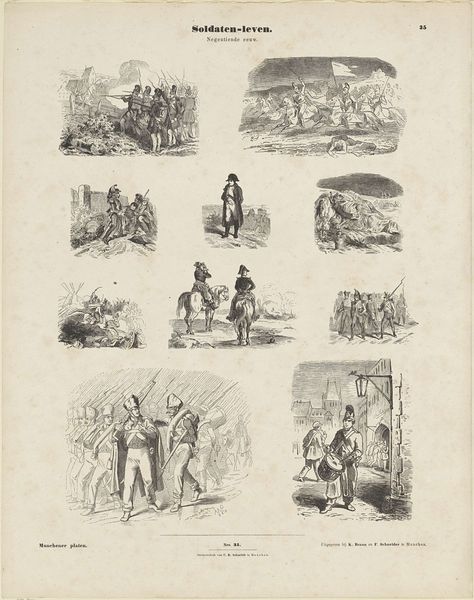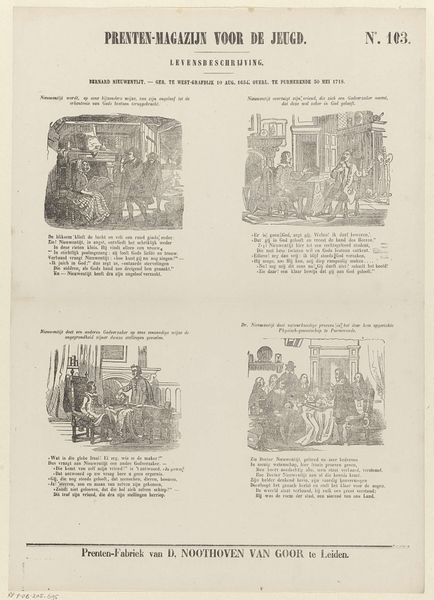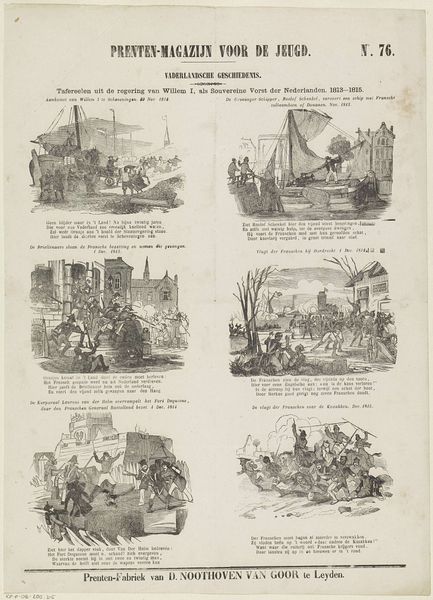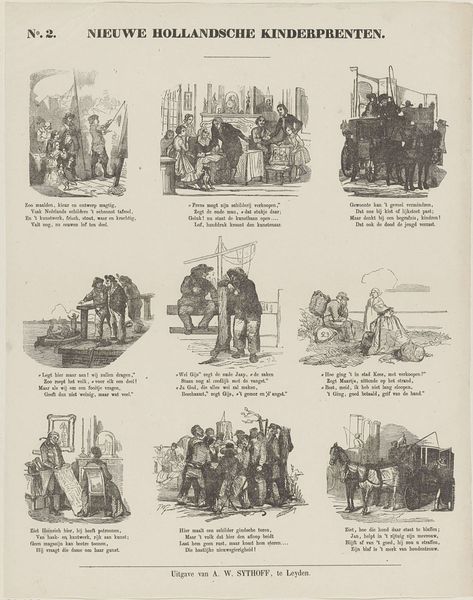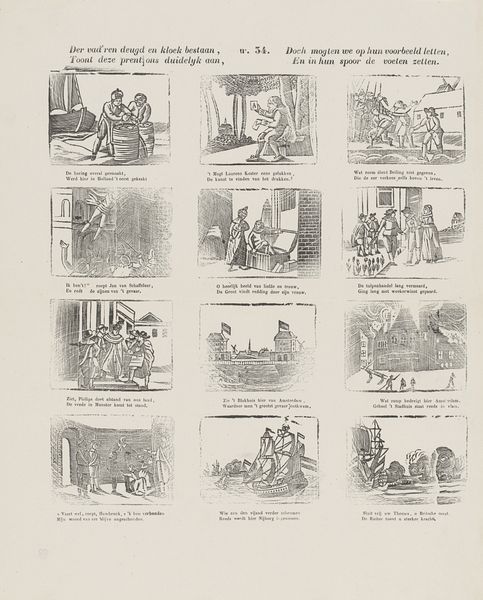
graphic-art, print
#
graphic-art
#
narrative-art
# print
#
genre-painting
Dimensions: height 427 mm, width 335 mm
Copyright: Rijks Museum: Open Domain
Curator: Oh, the charming chaos! This print, titled "Verschillende Voertuigen" – or "Various Vehicles" – from 1874, just sings to me of a bustling era. It’s from the studio of De Ruyter & Meijer. Doesn't it feel like stepping into a vibrant, albeit grayscale, storybook? Editor: My immediate impression is the sheer density of labor portrayed here. Each vignette showcases a different mode of transport, but they are also dense depictions of human and animal effort—an almost relentless drive to produce and move commodities. Curator: Absolutely, it is more than meets the eye at first glance. These modes aren't just about logistics; each scene pulses with everyday drama and snippets of Dutch life. It reminds me that we tend to forget about the human power and craftsmanship behind the commodities we crave. The movement feels palpable. I can almost hear the rumble of wheels. Editor: Precisely! We can consider, for instance, how these vehicles were not just passive objects, but were manufactured using particular skills and techniques. The print highlights the exploitation of labor – both human and animal – embedded within this developing network of production and transportation. How materials were sourced, crafted, and the working conditions... all of these would affect the final output of goods. Curator: Looking closer, beyond the overarching theme of transportation and physical labor, what draws me in, in particular, are those lovely scenes – that horse-drawn houseboat in the middle left – It has a romantic, nomadic feel and I imagine being pulled away on a grand adventure. These snapshots give the whole piece a human element I truly appreciate. Editor: Yet that supposed freedom hinges on a different kind of labor and infrastructure. These prints romanticize production—the circulation of things and people—obscuring exploitation inherent within their creation and maintenance, especially the working conditions of its staff. Curator: You always bring such necessary grounding, though I will hold onto my initial sentimentality. Looking back on "Verschillende Voertuigen", I am left thinking about movement – whether of goods, dreams, or just daily lives – and the artistry that can immortalize even mundane activity. Editor: And I, similarly, am left thinking of those unnamed makers, drivers, and animals in their role, and how we view work. Perhaps next we should explore a portrayal from their point of view, literally deconstructing such images.
Comments
No comments
Be the first to comment and join the conversation on the ultimate creative platform.




